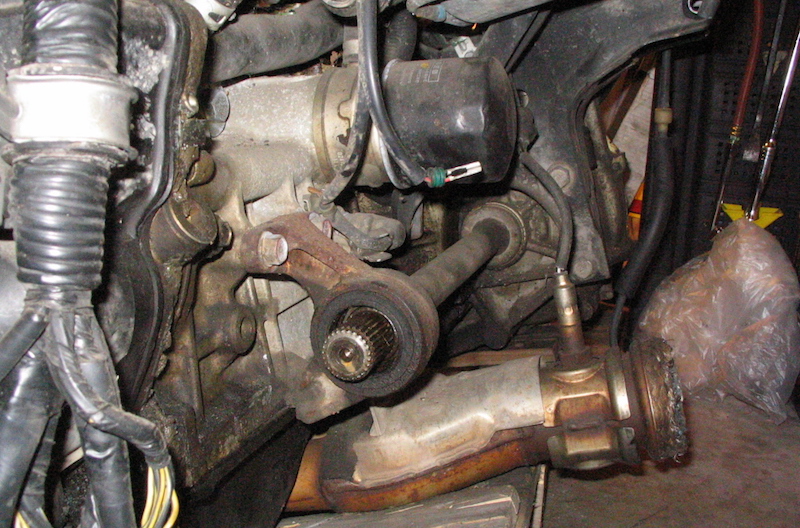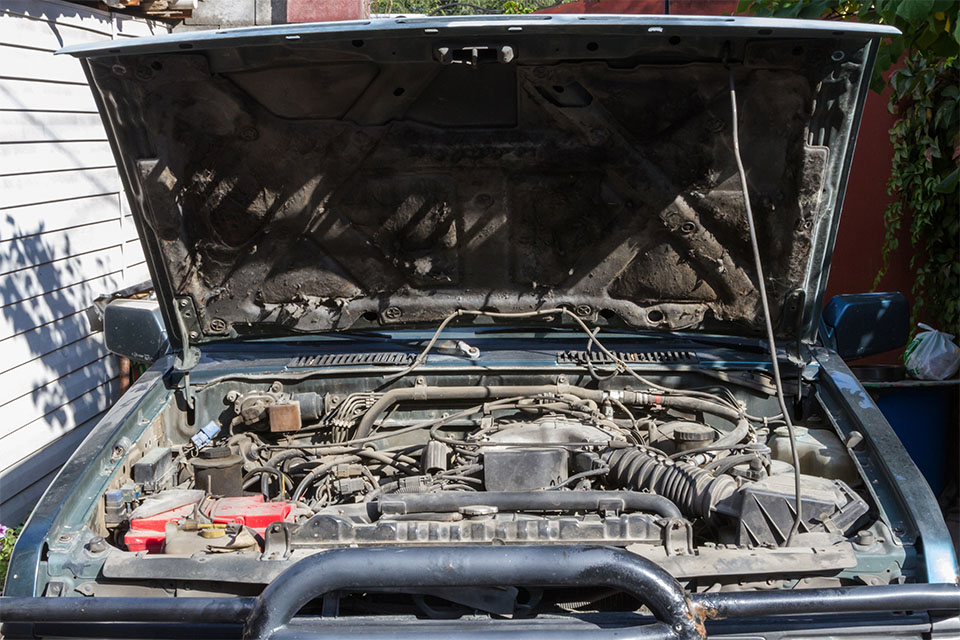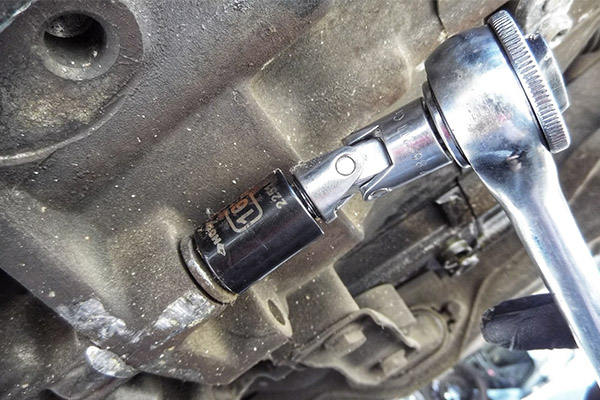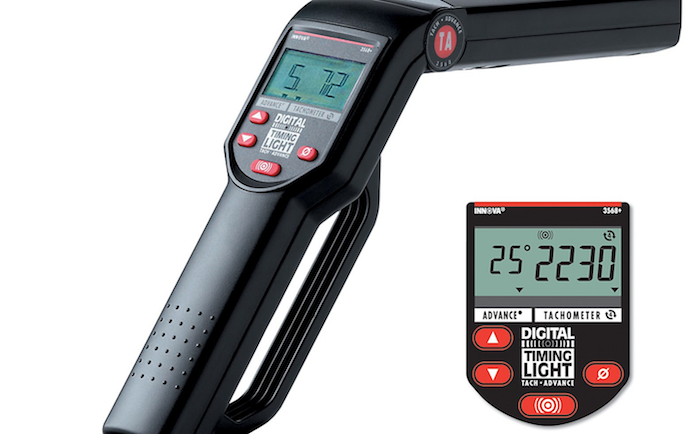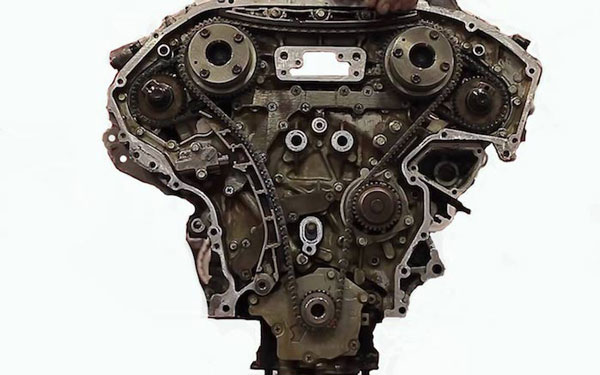Brutally cold winter temperatures are as hard on your vehicle as they are on you, so help out your ride with an engine block heater. Block heaters commonly cost under $100, offer multiple benefits, and are easy enough to install by a novice in under an hour. It's a fairly old idea—in WWII, troops would sometimes build a fire under the engine of a tank or truck to make it easier to start on a frigid winter morning. This one part will make your winters a lot more tolerable, so let's get started.

Source | Andy Jensen
An engine block heater is a simple device that uses electricity to power a heating element that warms the engine block and engine oil. Depending on the model and style of heater, it might also warm the coolant. There are several styles, but they all work generally the same, by plugging into a standard electrical outlet with a goal of warming up the engine oil before the engine is started.
Block heaters have numerous benefits:
- Easier cold-engine starts, due to warm oil being thinner and less viscous
- Extra engine protection, as warm oil circulates better
- Earlier use of cabin heater due to quicker warmups
- Increased gas mileage up to a claimed 10 percent increase, and reduced emissions, as vehicles operate most efficiently at normal operating temp
The easiest type of block heaters to install are the magnetic or flexible pad type that attach to the oil pan. These universal block heaters are great because you can easily use them on different vehicles, including ATVs and snowmobiles, or even use it to thaw frozen pipes. The downside is you might forget and leave it at home when you need it. Today, we'll cover installing the permanent type that slides into the engine block. It's a little more work but looks like a factory install and can't be left at home.
This is a good project for new DIYers
-
Jack up the front of the vehicle and secure with jack stands. Most trucks and high-clearance vehicles can skip this step.
-
Open the hood.
-
If your vehicle has a block heater port, locate an open port in the engine block. This is often where it was fitted with a block heater if it were to be sold in a location with brutally cold winters. You may need to push a coolant hose aside, or get under the engine and look under the exhaust manifolds. If your vehicle doesn't have a block heater port, you'll have to have a freeze plug removed in order to install a block heater. For example, on a Toyota 1.8L, the empty port is located on the driver's side of the engine, below the brake master cylinder. Removing the plastic windshield wiper cowl allows easy access to this location.
Source| Andy Jensen
-
While wearing gloves, coat the heating element with the thermal grease.
-
Slide the heating element into the block until it clicks and fits tight.
-
Connect the wiring by plugging it into the heating element.
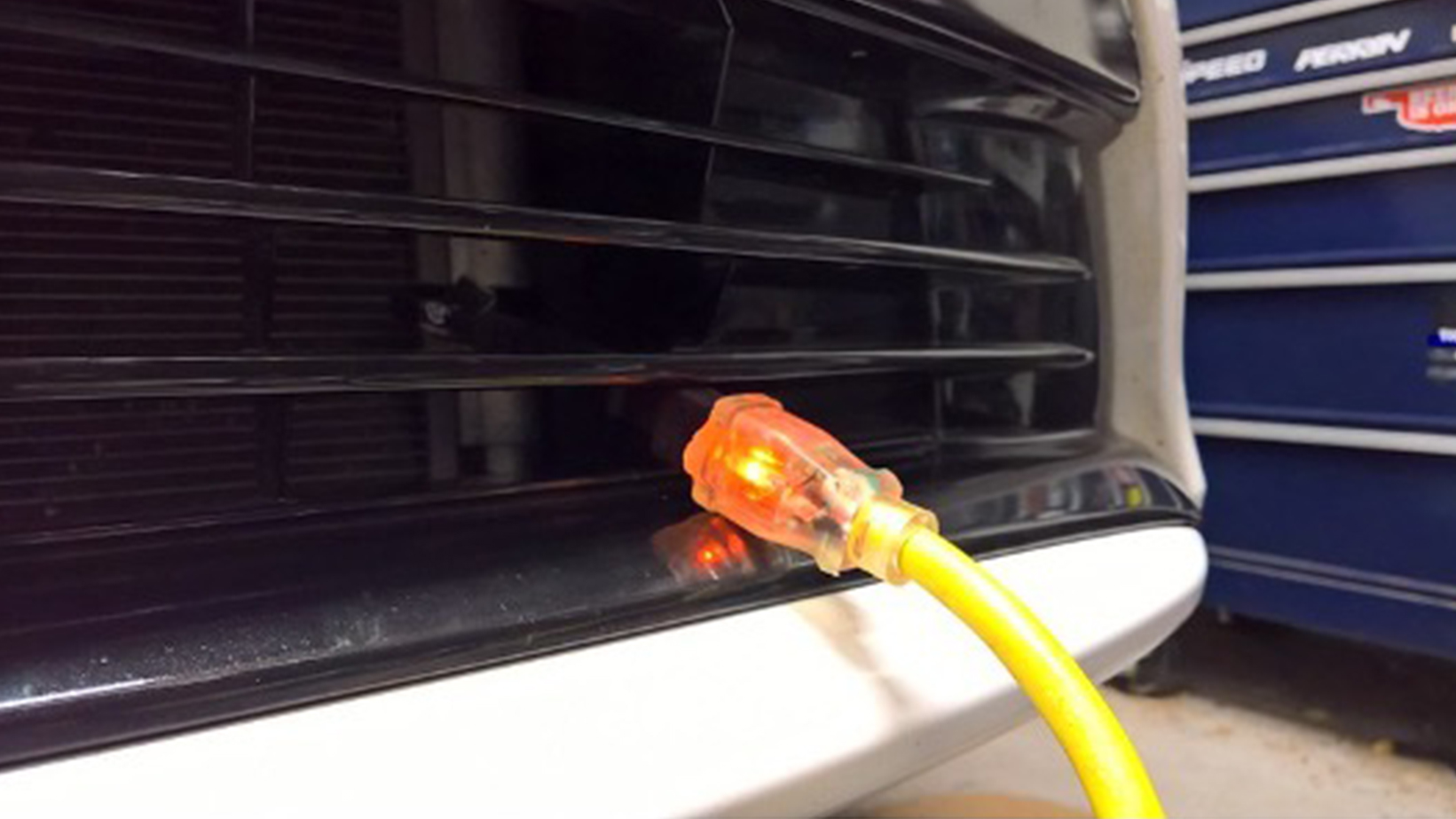
Source | Andy Jensen
-
Route the cable away from the engine bay to a location of your choice, such as behind a fog light or below the grille. You want it out of the way of hot engine components like the exhaust manifold, and moving parts like the accessory pulleys. The outlet should be easy to reach from outside the vehicle.
-
Use zip ties to secure the cable in place.
-
Put the cap on the cable outlet to protect it from the elements when not in use.
-
Plug in the block heater two to three hours before driving. While you can leave it connected overnight, that unnecessarily uses more electricity. Using an outlet timer makes for automatic operation, so you won't forget to power it on before your morning commute.
Many vehicles will have to have a freeze plug removed in order to install. This typically takes removing coolant and adding coolant back into the system after the block heater is installed.
You want to go heavy on the grease, as this will displace some air in the block hole, making for easier insertion, and it helps with efficient heat transfer.
Tighten down the zip ties, so the cable cannot move. This will prevent engine vibrations from causing rubbing wear.
